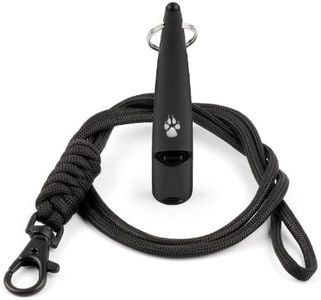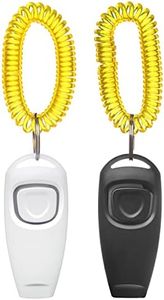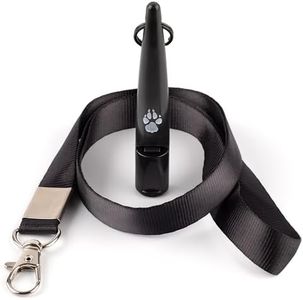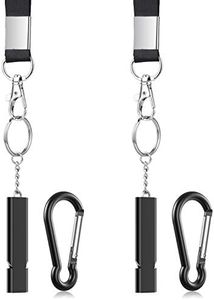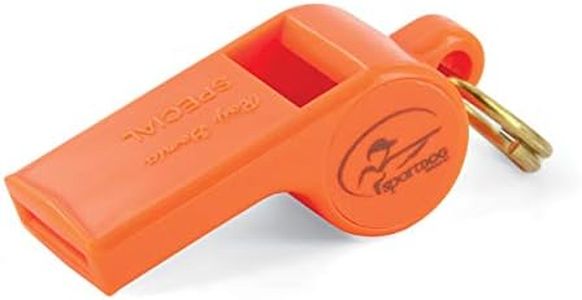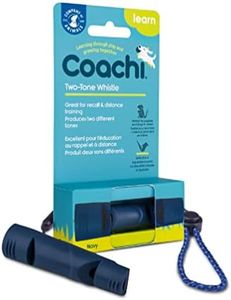We Use CookiesWe use cookies to enhance the security, performance,
functionality and for analytical and promotional activities. By continuing to browse this site you
are agreeing to our privacy policy
10 Best Dog Whistles
From leading brands and best sellers available on the web.Buying Guide for the Best Dog Whistles
Choosing the right dog whistle is important for effective training, communication, or recall for your dog. Dog whistles can serve different purposes, including signaling commands from a distance or in noisy environments, and some are even designed to be inaudible to humans, making them less distracting. To find the best fit for you and your dog, you need to consider several key features that determine how useful and comfortable the whistle will be for both you and your furry friend.Frequency RangeThe frequency range of a dog whistle refers to the pitch or tone it can produce, which may be audible or inaudible to humans but heard by dogs. Some whistles let you adjust the pitch, while others come with a fixed frequency. If you plan to train a variety of dogs or are unsure how your dog will respond, a model with adjustable frequency is useful, as you can find the frequency your dog reacts to best. If your goal is basic recall or your dog hears standard pitches well, a fixed whistle could be sufficient. Always make sure that the whistle's frequency is suitable for your dog's hearing, especially if your dog is older or hard of hearing.
Audibility (Silent vs. Audible Whistles)Audible whistles make sounds that both dogs and humans can hear, while silent dog whistles emit sounds in a range mostly undetectable by humans but audible to dogs. Choose a silent whistle if you want less disturbance for people nearby—like in parks or public areas—while still effectively communicating with your pet. An audible whistle might be easier for beginners or when you want immediate feedback during training since you'll hear the tone yourself. Consider your environment and whether you want others to hear the whistle when you decide between these options.
Material and Build QualityDog whistles typically come in materials like plastic or metal. Metal whistles are generally more durable, weather-resistant, and have a more consistent sound, making them good for regular outdoor use. Plastic whistles may be lightweight and less expensive but may not last as long or withstand rough conditions. If you spend a lot of time outside or need your whistle to last, consider a sturdy, rust-proof material. If you just need a simple whistle for occasional use, plastic can work just fine.
AdjustabilitySome dog whistles let you adjust the tone and pitch by turning or sliding a piece on the whistle, giving you the chance to personalize commands or experiment to see which sound your dog responds to best. This is particularly helpful if training more than one dog or if your dog has a unique sensitivity to certain pitches. If you value flexibility and fine-tuning, prioritize adjustability, but if your needs are straightforward, a non-adjustable whistle may be enough.
Portability and Ease of UseYou’ll want to look at the size and design of the whistle for comfort and convenience. Compact whistles can be carried around easily on a keychain or lanyard, making them ideal for training on the go. Some models have rings or include straps for portability. When choosing, think about where and how you’ll use the whistle—if you train outside regularly or want something to bring on walks, make sure it’s light and easy to carry.
Cleaning and MaintenanceIt’s important to keep a dog whistle clean, as dirt and saliva can build up over time. Consider whether the whistle can be easily taken apart and washed, or if it has a smooth design that prevents gunk from getting stuck. If you plan to use the whistle daily or with multiple pets, choose a model that is easy to maintain and clean to keep it hygienic and lasting longer.


